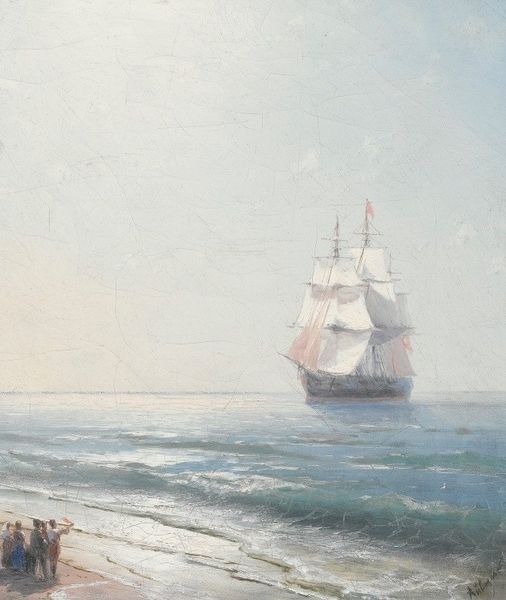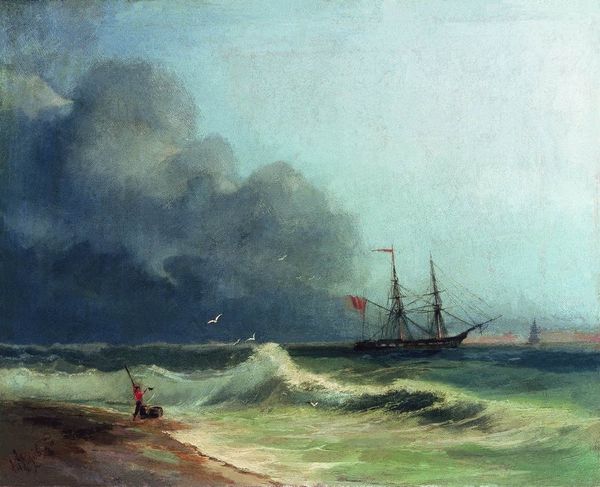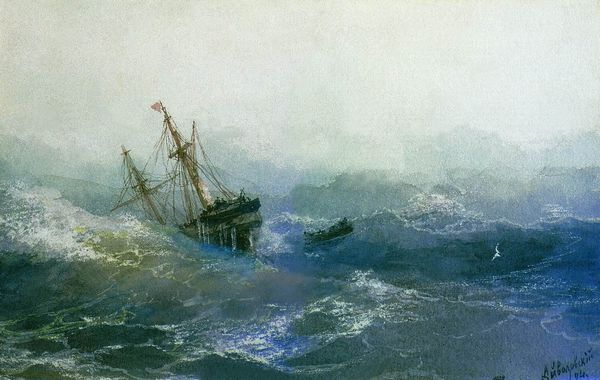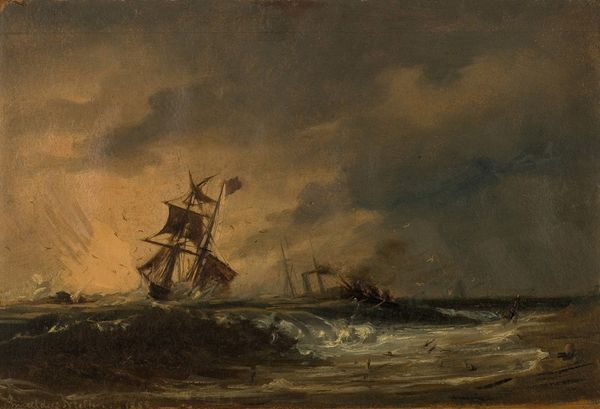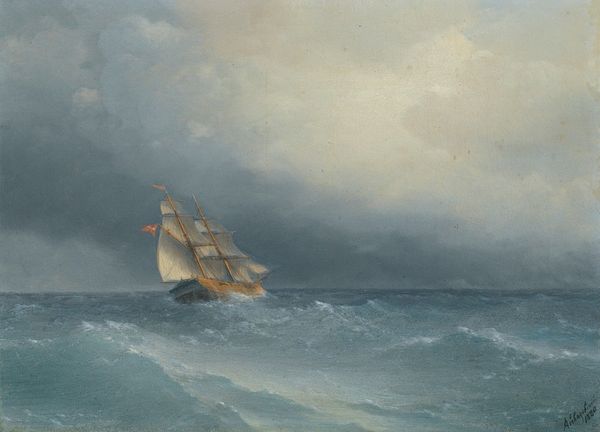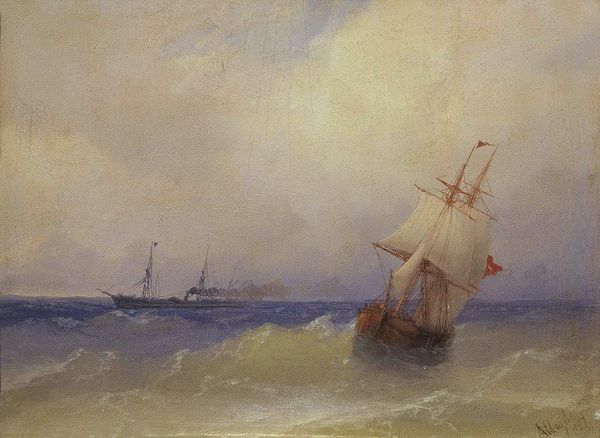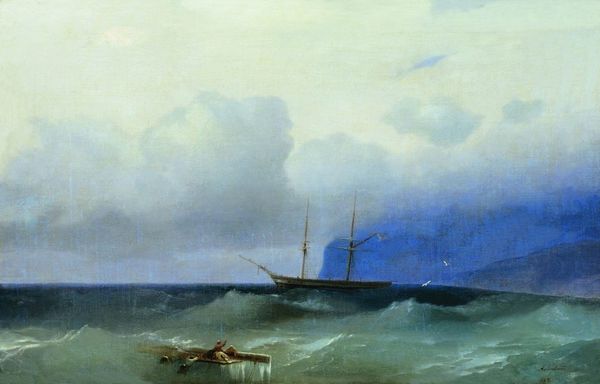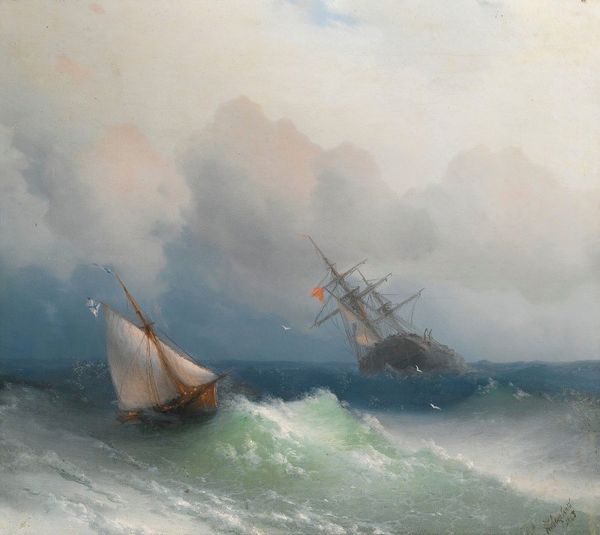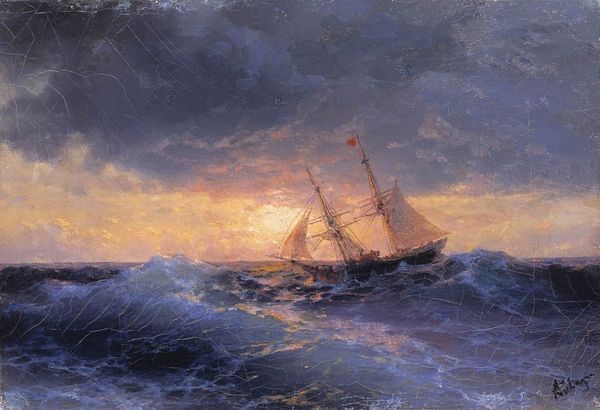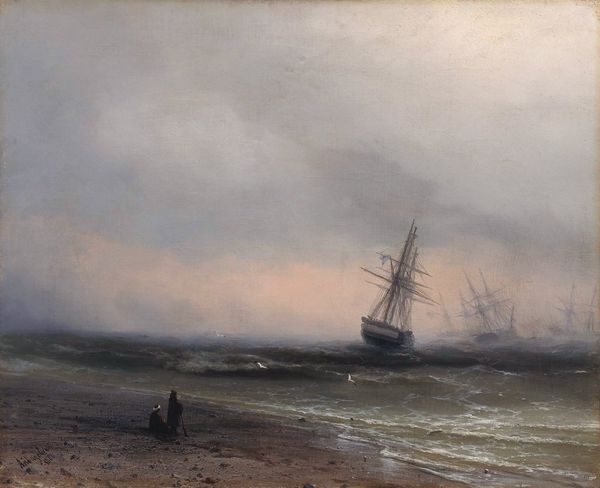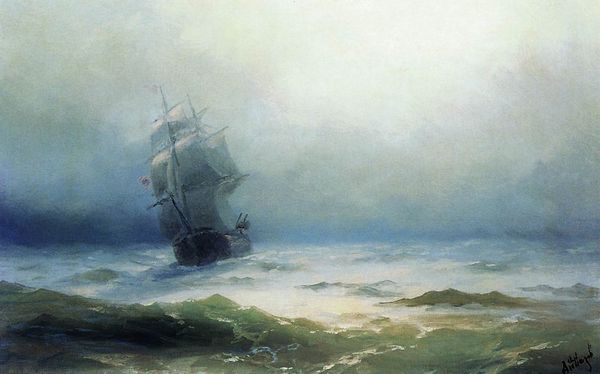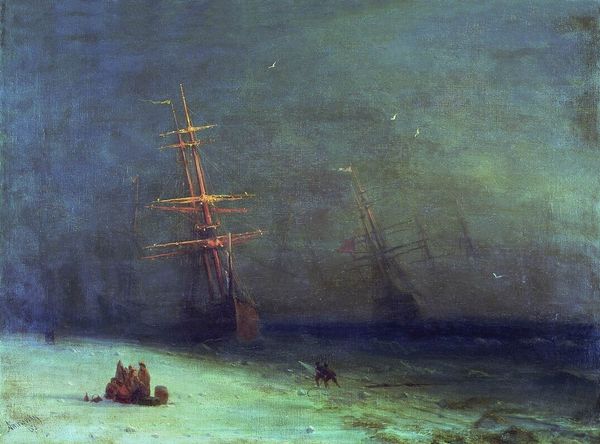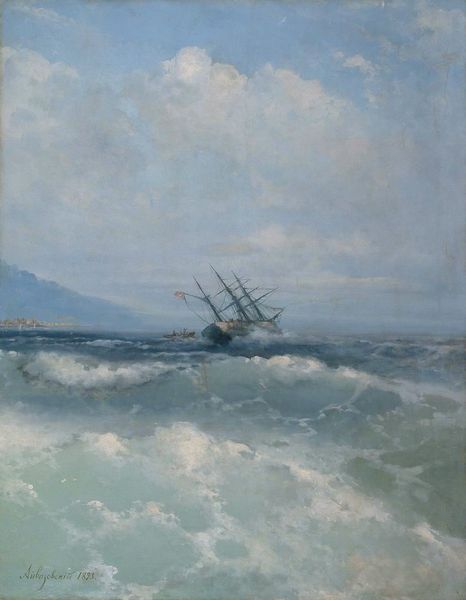
painting, oil-paint
#
painting
#
oil-paint
#
landscape
#
impressionist landscape
#
figuration
#
oil painting
#
romanticism
#
russian-avant-garde
#
realism
Copyright: Public Domain: Artvee
Editor: Here we have Aivazovsky’s oil painting, "Stormy Coast." It looks like a dramatic scene—a lone figure on the beach and a ship caught in a tempest. What do you see in this piece? Curator: I see more than just a dramatic seascape; I see a reflection of Russia's complex relationship with its maritime power and its national identity. Aivazovsky was, after all, the official painter of the Russian Navy. How do we interpret the overwhelming power of the sea in relation to human vulnerability here? Is the figure on the beach a symbol of resilience or of the insignificance of human life in the face of nature's force? Editor: That's a good question. I hadn’t considered the figure as representing more than just a person on the shore. Perhaps Aivazovsky is exploring power dynamics through the contrast between humanity and nature? Curator: Precisely. Think about the historical context. Russia was expanding its naval power, engaging in geopolitical struggles. Aivazovsky's seascapes weren't merely pretty pictures; they were visual statements about Russia's ambition and its fraught relationship with the world. This "Stormy Coast," then, speaks to the precarity of such ambition. What do the limited color choices communicate to you? Editor: There is a very restricted palette: mostly blues and greys. Does the uniformity hint at a broader social commentary, such as the limitations placed on certain demographics during Imperial Russia, mirroring the restricted color spectrum? Curator: It's possible. It invites questions about who is included and who is excluded from these grand narratives of power and expansion, both then and now. Art provides this connection. Editor: That’s a fascinating way to look at it. Thanks! I never thought about seascapes having that much cultural context within them. Curator: It is vital to continuously re-evaluate familiar art and see it as reflecting, commenting, and being embedded in the socio-political forces of their time, encouraging intersectional conversations.
Comments
No comments
Be the first to comment and join the conversation on the ultimate creative platform.

